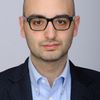
NEW YORK -- On Saturday morning, The New York Times ran a front-page photo of a mass rally in Pyongyang, one of few recent images to originate from the North Korean capital as leader Kim Jong Un once again beats the drums of war.
The Associated Press photo, among several taken Friday, was also splashed across The Huffington Post and published by dozens of news outlets. As the only western news outlet with a bureau in Pyongyang, the AP has a clear advantage on covering such events, and the photos taken Friday by the AP’s Jon Chol Jin -- a North Korean journalist in his mid-20s who previously worked for state media there -- accompanied numerous reports in recent days.
The latest standoff, complete with threats from North Korea of pre-emptive nuclear strikes against South Korea and the United States, has once again exposed the difficulty of reporting from a country that offers nearly no press access -- unless perhaps accompanied by Dennis Rodman.
Since opening a bureau in Pyongyang in early 2012, the AP has been able to cover large-scale rallies like Friday's event, made some progress documenting public life via Instagram, and benefited every time high-profile guests have arrived, such as Google executive Eric Schmidt and the Vice magazine contingent that included Rodman and members of the Harlem Globetrotters.
But AP bureau staffers still struggle with severe restrictions in a press-averse dictatorship where man-on-the-street reporting remains a foreign concept and photography has traditionally been used to prop up the government.
Santiago Lyon, the AP’s director of photography, told The Huffington Post that access remains complicated because “there is no tradition of independent journalism" in North Korea.
“The local journalism tends to be for official purposes,” Lyon said. “What we’ve been working hard at is introducing the concept of journalism as a storytelling technique as opposed to a propagandistic technique.”
While AP editors say they're trying to bring journalistic values to North Korea, some critics argue the news organization isn't doing enough from its unique position in Pyongyang to hold Kim Jong Un's regime accountable for human rights abuses. Donald Kirk, a veteran correspondent working for the Christian Science Monitor, recently suggested that the AP is pulling punches in order to keep its bureau open.
"While the AP boasts of having the first western news bureau in the North Korean capital, AP publicity does not acknowledge that the bureau operates under constraints that raise questions about whether it’s a real bureau," Kirk wrote.
John Daniszewski, the AP’s senior editor for international news, told The Huffington Post that the news organization has forcefully covered the human rights situation in North Korea, but stressed that such reporting often originates outside the country, where exiles can more freely speak to journalists.
"Our coverage of North Korea does not begin or end with our people on the ground there," Daniszewski said. "But our people on the ground there provide vital information of what’s going on in that country, especially now as it moves to the forefront of the news."
"We’re far better off having journalists in there on a regular and frequent basis than if we were 100 percent blind," he added.
Without on-the-ground coverage, news outlets are left reporting only what's released by North Korea's state media. And two instances of possible digital manipulation in the past week showed how problematic it can be to rely on images from state-run sources.
AFP, another wire service, recently pulled a North Korea state media photo, which depicted hovercraft storming a beach, that appears to have been doctored. The AP did not run the hovercraft photo, nor did it publish a widely distributed state media photo from Friday showing Jong Un and his advisers supposedly plotting an attack on the United States. Lyon said the AP “couldn’t say with certainty” that the war room photo had been altered, but editors within the news organization believed something had been done to it and therefore kept it off the news wire.
Currently, the AP has two staffers reporting full-time from its Pyongyang bureau: Jin and photographer Kim Kwang Hyon, who were both previously with the Korean Central News Agency. Bureau chief Jean H. Lee splits time between Pyongyang and Seoul, South Korea, while senior video journalist Raf Wober and photographer David Guttenfelder regularly filter in and out of the country.
Lyon said the AP is trying to encourage its North Korean staffers to produce the type of daily features and street interviews that outside journalists would do. But that’s “a new concept,” Lyon said, and one that requires detailed explanations with authorities concerned about any independent coverage.
Daniszewski said the AP’s North Korean staffers have technical skills when it come to video and photography, but still need training in the type of journalism that is foreign to people who haven't “always lived in a free and open society."
While acknowledging ongoing press limitations, Daniszewski pointed out that AP journalists were able to cover street celebrations following a recent rocket launch. In the past, the AP -- and other news outlets -- would only have been able to rely on state media for such moments.
“We’re feeling our way and opening doors when we can,” Daniszewski said.
